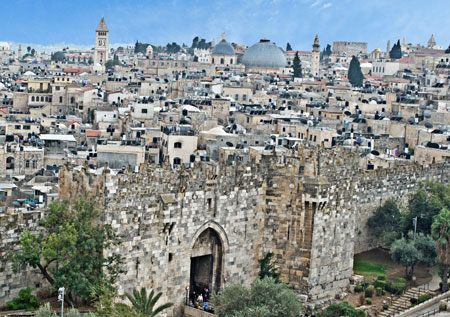Email: right2edu@birzeit.edu | Phone: 0097(0)2-298-2059
Standard Arrest? The shooting of an Unarmed Student
Ibrahim Omar Sarhan, a 21-year-old student was killed in the early hours of July 13, 2011 in Al Far’a refugee camp nearNablus. The science student of An Najah University was shot by Israeli soldiers after leaving the local mosque at around 4:30am with his uncle. He died shortly after arriving at hospital less than an hour later. Although the Israeli army has defended its actions stating that Ibrahim was injured during a “standard arrest procedure”, both the circumstances of his shooting death and Israel’s obligations under international humanitarian and human rights law indicate that Ibrahim was yet another mortal victim of Israel’s unchecked and illegal violent assaults on Palestinian civilians in the occupied territories.
Al Far’a refugee camp, where Ibrahim was born and lived with his family, was established in 1948 after the creation ofIsraelwhen over 700,000 Palestinians were expelled or fled from their homes and hundreds of Palestinian villages were depopulated and destroyed. The camp was inhabited by refugees fleeing from 80 different villages from the north coastal region and currently has a population of around 7,000 people. UNRWA provides basic educational and health services to the residents. Nonetheless, poverty is endemic with only 14% of the residents fully employed according to the camp officials.
Local sources report that Israeli soldiers enter the camp regularly, often for no apparent reason other than to provoke the residents. However in the last three months, military incursions had been carried out quietly under the cover of night, with most residents unaware of their presence. On July 13, however, this was not the case. Residents reported waking to the explosions of sound bombs and gun fire after Israeli forces entered the camp at around 3:00 a.m. Residents as well as the Israeli army report that soldiers were met with stone-throwing carried out by local youth. The Israeli army has additionally claimed that an “incendiary device” was thrown at the soldiers, a claim which has been refuted by residents in the camp, but that no soldiers were injured during the operation.
As was his daily routine, Ibrahim attended dawn prayers at his local mosque in the early morning of July 13. After the prayer Ibrahim and his uncle made their way to meet Ibrahim’s father and mother who were to leave on a trip toMecca. Their route led them down a tight alley, where reportedly walking several metres apart; the pair encountered a group of Israeli soldiers. The pair is reported to have not become aware of Israeli military presence until one soldier shouted “stop” in Hebrew. Ibrahim’s uncle, who was walking approximately 5-7 meters in front of Ibrahim and was much closer to the soldiers, stopped and was consequently arrested. Ibrahim, however, fled, running back towards the mosque, and turning left at the next intersection. Israeli soldiers pursued Ibrahim and opened fire at him from the intersection he had turned at, firing at him from an approximate distance of 40 meters. Ibrahim was reportedly not hit by this fire and continued to run up the street, but seconds later, Ibrahim was engaged by a second group of soldiers on the same street, who from a side street on his left opened fire from approximately 25 metres. One bullet pierced Ibrahim’s thigh, rupturing his femoral artery.
Ibrahim sprinted back up the street they had come from. After running approximately 60 meters, Ibrahim collapsed in front of a house and began to lose consciousness due to the massive blood loss. Residents of the house attempted to assist Ibrahim but Israeli soldiers, who had continued to pursue Ibrahim, ordered them to stay inside. Some residents report that the soldiers opened fire to enforce these orders. After several minutes of this stand-off, residents dragged Ibrahim around the corner out of the range of gunfire and carried him into another house, where the mother of the second house attempted to provide basic first aid to stop the flow of blood.
Israeli soldiers, who had apparently followed the blood trail, entered the second house soon after. Witnesses report that the soldiers pushed aside residents who were pleading with the soldiers to leave Ibrahim where he lay until the ambulance arrived. While Ibrahim lay in what residents of the home described as a “pool of blood,” witnesses report that Israeli soldiers treated Ibrahim by breaking the leg off of a stool and tying it to his injured leg. The soldiers then carried Ibrahim from the house to a nearby side street inaccessible to cars.
The Palestinian Red Crescent Society received a phone call from the camp at around 5:00am, requesting an ambulance for a man who had collapsed on the ground. The ambulance arrived at the house around 10 minutes after receiving the call. Because Ibrahim had been moved from the house to the narrow side street by Israeli soldiers, the ambulance was forced to reroute to his new position, which took approximately 2 minutes. The ambulance was then briefly delayed when one Israeli soldier attempted to deny the ambulance access to the victim. After an argument between the soldiers, the ambulance was granted access and the paramedics found Ibrahim in a semi-conscious state. The paramedic reported that Ibrahim’s leg had been wrapped with a bandage in an attempt to stem the flow of blood, but that he had not been provided with the vital liquids that were necessary given his critical condition. Ibrahim was then taken by ambulance toRifidiyaHospitalinNablus, where shortly after arriving he was pronounced dead.

Blood stains in front of the first house where Ibrahim collapsed and was denied medical attention by Israeli soldiers
The cause of death for Ibrahim was cardiac arrest, hemorrhagic shock due to the arterial rupture of the femoral artery. The femoral artery is a main artery that runs down both legs and is vital to the vascular survival of a person as it supplies oxygen to the lower half of the body. If severed, a person may bleed to death within 10 to 15 minutes without immediate medical attention. Any injury to the femoral artery can instantly become a life threatening situation. The paramedic who attended to Ibrahim reports that in his opinion, if Ibrahim would have been provided with the appropriate medical care sooner, such as the blood being stopped and vital liquids administered, Ibrahim may have survived.
*****
The Israeli military has claimed that Ibrahim was shot during a “standard arrest procedure,” although there have been no public statements from the Israeli military that would indicate that Ibrahim had been identified or targeted for arrest prior to the shooting. In addition to Ibrahim, residents report that 15 other men from the camp were arrested, 12 of whom were released later that same day.
Ibrahim had never been previously arrested by Israeli soldiers or police and was described by locals, including his high school teacher, as a “peaceful boy” who always had a smile on his face. His family describe Ibrahim as a quiet, polite and caring young man, explaining that never once did other residents in the camp complain of his behaviour, a rare occurrence in an overcrowded refugee camp. He cared very much for his family and saw it his responsibility to help them where and whenever he could. He helped his father in the family shop regularly from an early age and his mother explains how his five sisters saw him as the person to go to with their secrets and troubles. Ibrahim’s father describes him as “‘a real man.” Like most 21 year olds he had mixed ideas of what he would like to achieve with his future and although he was a science student, he had a great desire to work as a nurse. His tragic death sees a young man’s life cut short and leaves a family of five sisters, three brothers and a mother and father without the friend and confidante that they cherished.
The shooting death of Ibrahim Sarhan implicates the violations of multiple provisions of
International Humanitarian and Human Rights Law. For a complete legal analysis of the shooting death of Ibrahim Sarhan, please see our website at http://www.najah.edu/uchrd or link directly to the report here.
For the report “Standard Arrest?: The Shooting of an Unarmed Student” in Arabic.
More Articles
Under Israeli blockade of Gaza,...
Israel does not explicitly ban importing books to...






